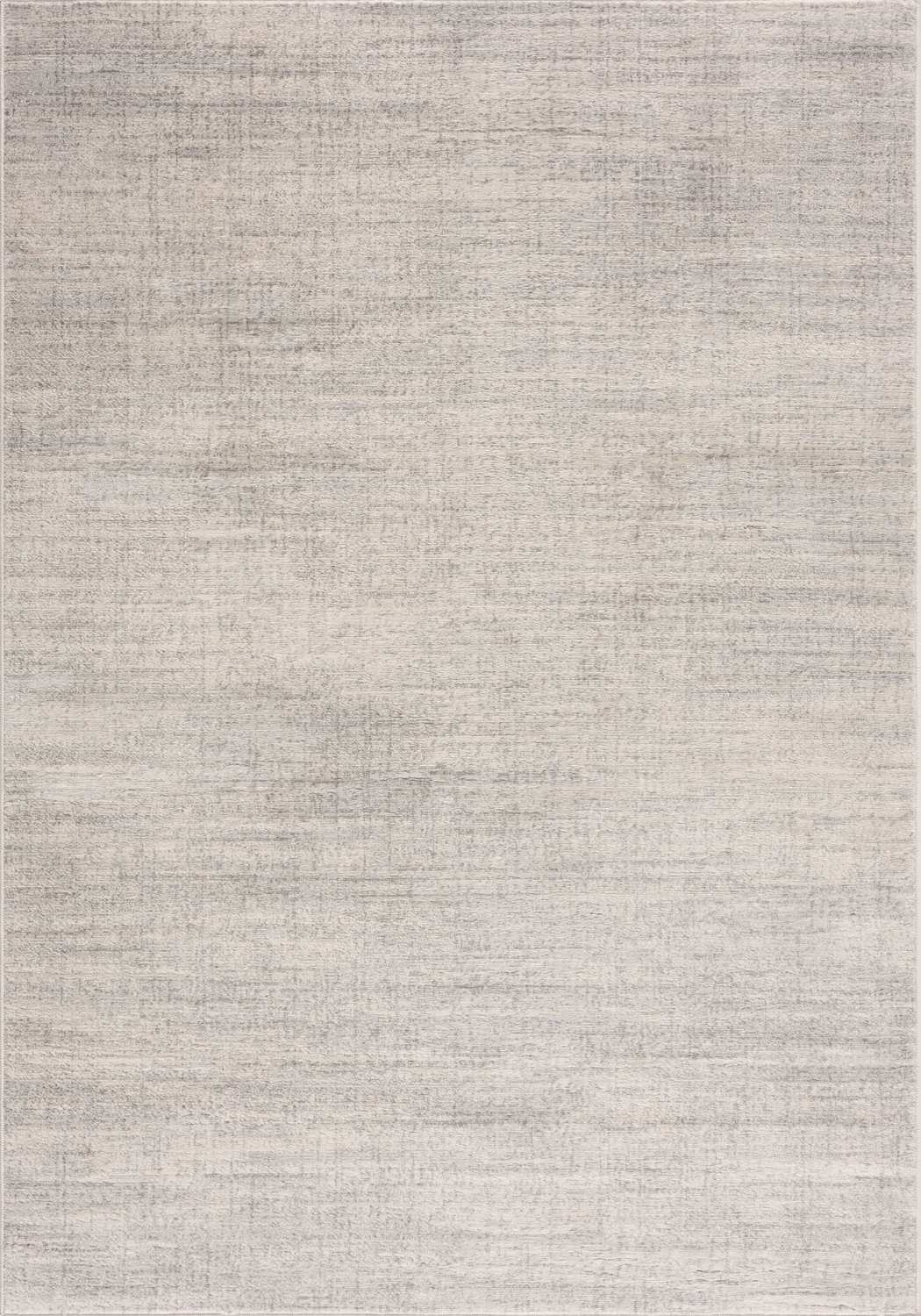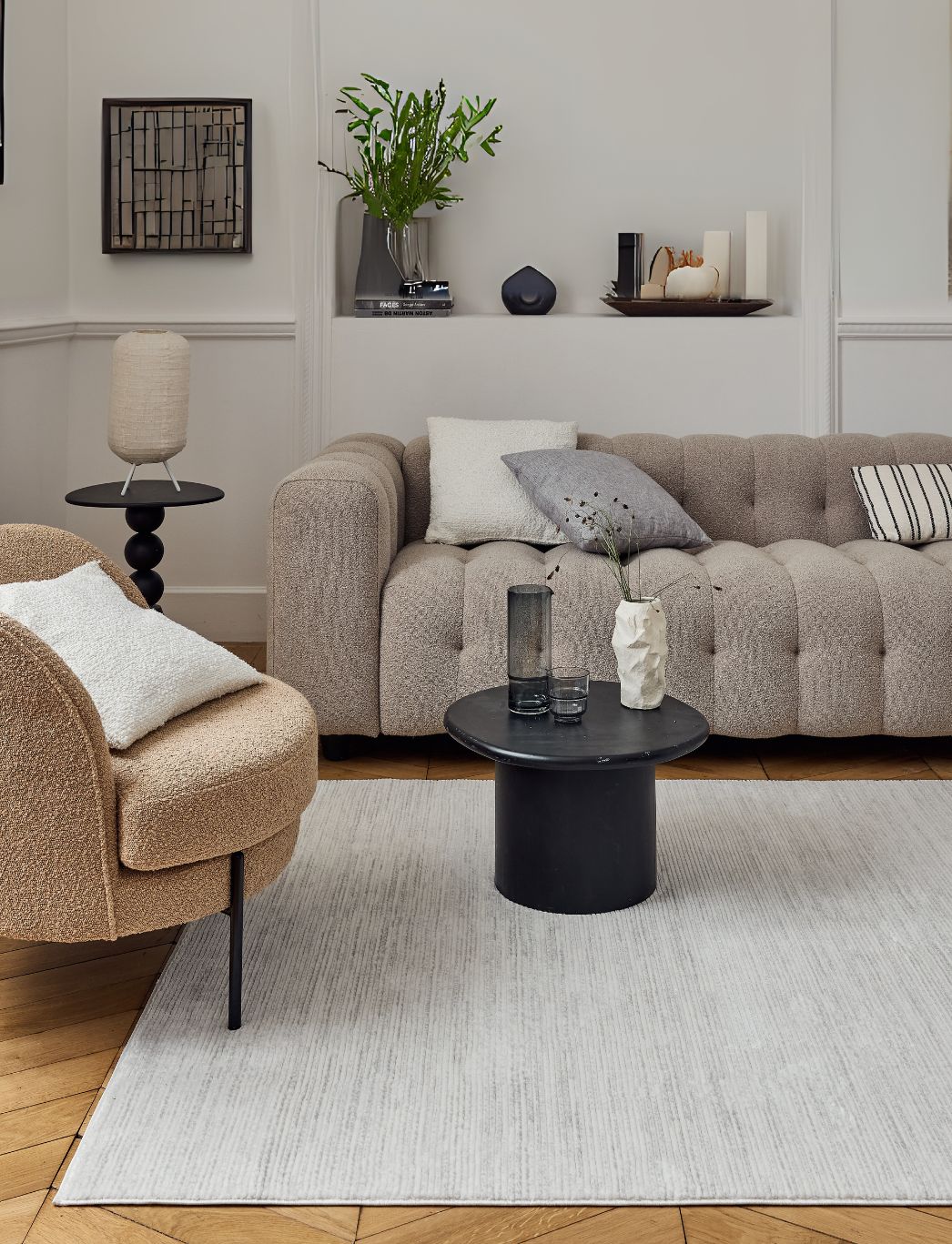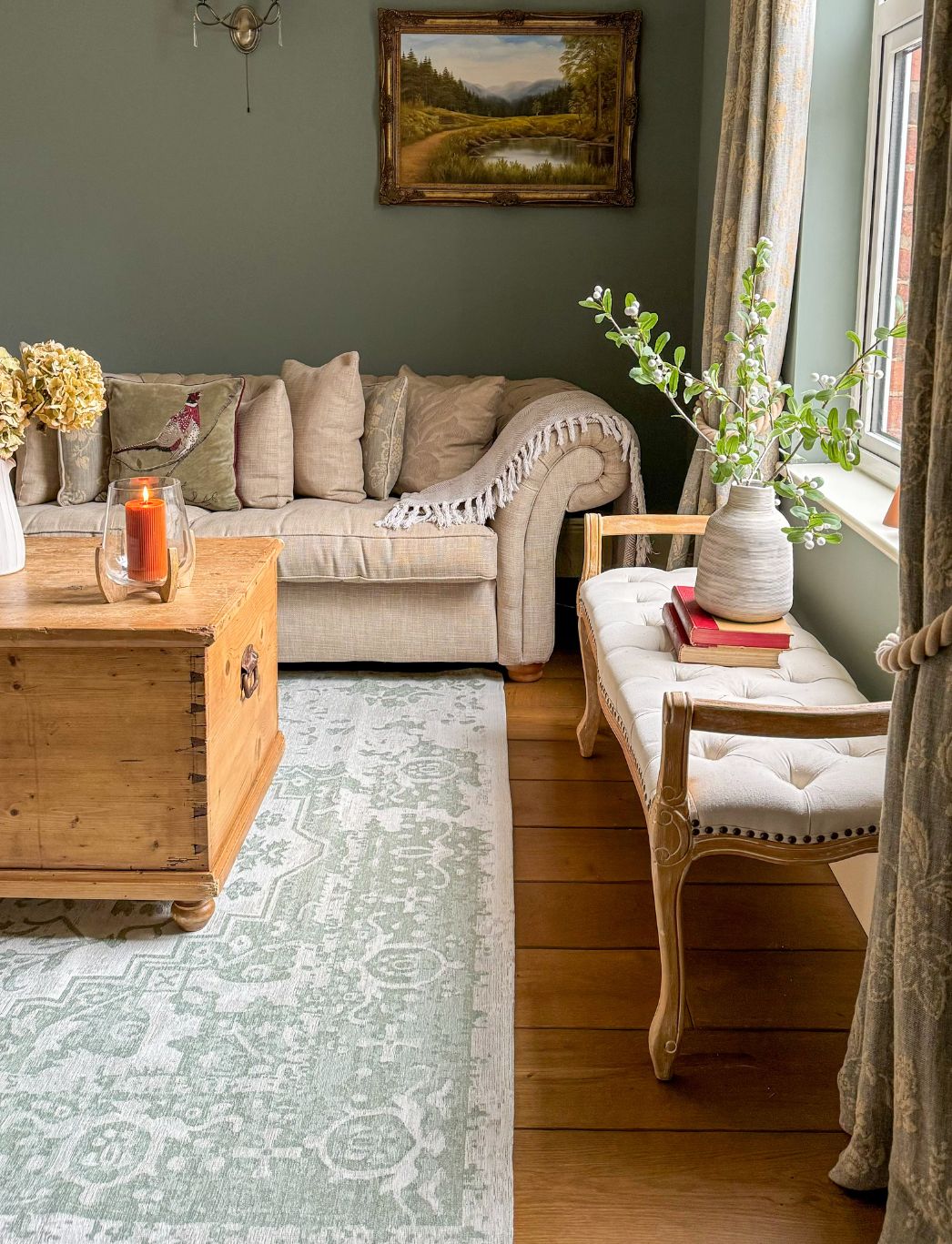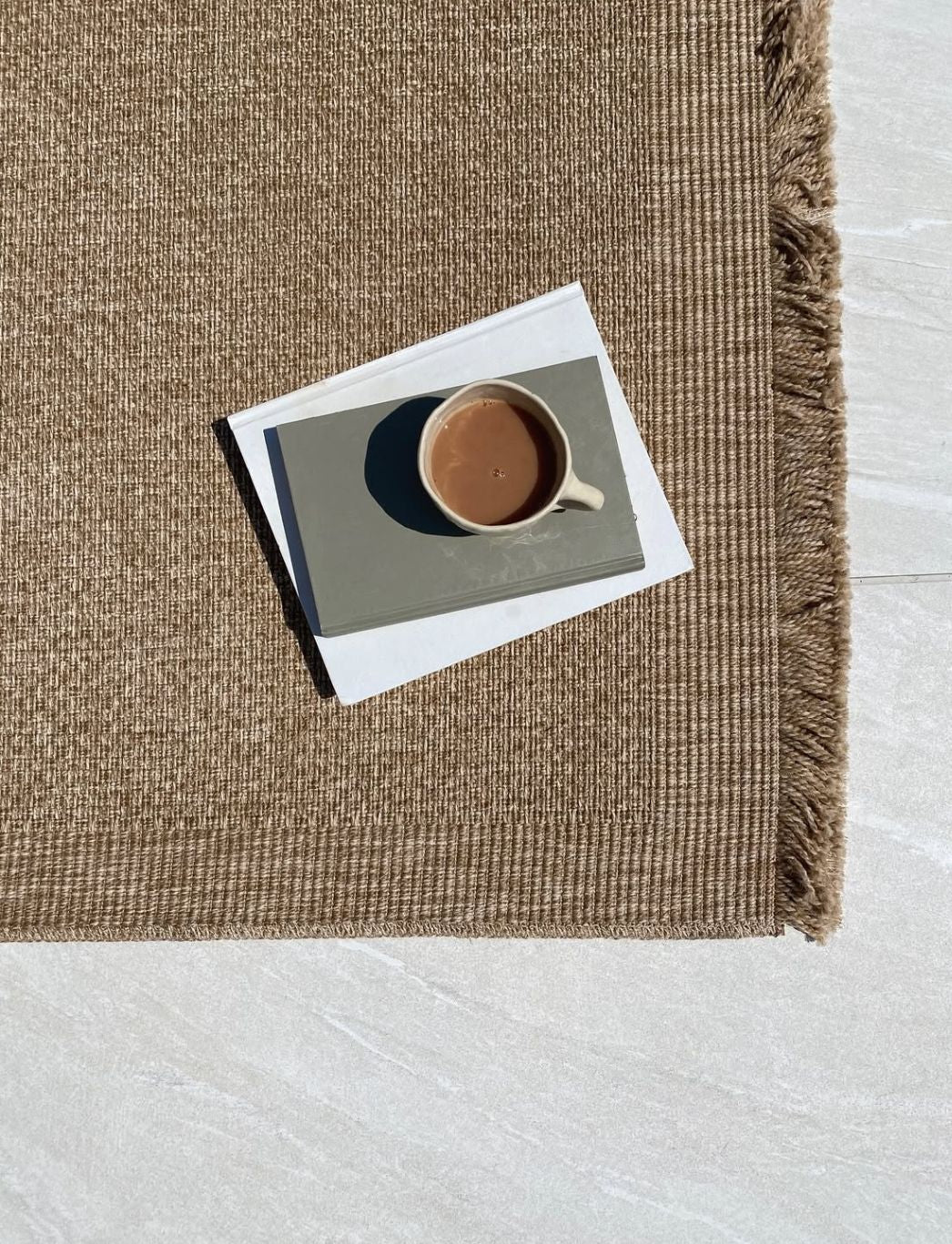Sustainable Style: Choosing Jute Rugs for an Eco-Friendly Garden

Have you contemplated ways to elevate your garden's aesthetic appeal while staying true to your eco-conscious values? Look no further than the versatile and sustainable option of jute rugs.
Not only do they add a touch of natural elegance to your outdoor space, but they also come with many environmental benefits. Let's delve into why choosing jute rugs for an eco-friendly garden is a trend worth embracing.
Choosing Jute Rugs for an Eco-Friendly Garden
1. Eco-Friendly Material
Jute rugs are crafted from the fibres of the jute plant, which is known for its rapid growth and minimal environmental impact. Unlike synthetic materials, jute is biodegradable and renewable, making it a sustainable choice for your garden decor. By opting for jute rugs, you're reducing your carbon footprint and contributing to a healthier planet.
2. Durability and Resilience
Outdoor rugs are subjected to various weather conditions, from scorching sun to heavy rainfall. Jute rugs are renowned for their durability and resilience, making them ideal for withstanding the elements in your garden.
Their sturdy construction ensures they can withstand high foot traffic and retain their shape and colour, even after prolonged exposure to outdoor conditions.
3. Natural Aesthetic Appeal
One of the most enticing aspects of jute rugs is their natural aesthetic appeal. Their earthy texture and neutral tones complement the lush greenery of a garden, creating a harmonious and inviting outdoor space.
Whether you're hosting garden parties or simply lounging in the sun, jute rugs add warmth and charm to your surroundings, enhancing the overall ambience of your garden.

4. Versatile Design Options
Contrary to popular belief, jute rugs have various designs and patterns to suit your preferences. Whether you prefer a simple woven design or intricate geometric patterns, a jute rug complements every garden aesthetic.
Additionally, jute rugs can be layered with other outdoor rugs or paired with cushions and throws to create a cosy outdoor seating area.
5. Low Maintenance
Maintaining a pristine garden requires effort, but choosing outdoor decor shouldn't add to the workload. Jute rugs are inherently low maintenance, requiring minimal care to keep them looking their best.
Regular vacuuming and occasional spot cleaning are needed to maintain the beauty and integrity of your jute rug, allowing you to enjoy your garden oasis more.
6. Affordability
In addition to their environmental and aesthetic benefits, jute rugs are also budget-friendly options for outdoor decor. Compared to other natural fibre rugs, such as sisal or seagrass, jute rugs offer excellent value for money without compromising on quality.
Their affordability makes them accessible to a wide range of homeowners looking to enhance their gardens in an eco-friendly manner.
Additional Benefits of Jute Rugs
Beyond their environmental friendliness and aesthetic appeal, jute rugs offer a range of additional benefits that make them an ideal choice for your garden. Their natural fibres have inherent anti-static properties, making them resistant to dust and dirt—a valuable trait for outdoor use where cleanliness can be challenging.
Additionally, jute rugs provide excellent insulation, keeping your feet warm in cooler weather and cool in the heat of summer. This thermal regulation can enhance your outdoor comfort and extend the usability of your garden space throughout the year.
Moreover, jute rugs are hypoallergenic, making them suitable for families with allergies or sensitivities. With numerous advantages, jute rugs are a versatile and practical solution for eco-conscious gardeners seeking sustainable style.
Incorporating Jute Rugs Into Your Garden Design
Now that you're convinced of the benefits of jute rugs for your eco-friendly garden, it's time to explore how to incorporate them seamlessly into your outdoor design. Consider placing a jute rug underneath your outdoor furniture to define the space and add a cosy touch.
Alternatively, use a jute rug as a centrepiece in your garden seating area, anchoring the space and providing a relaxing spot. You can also layer jute rugs with other outdoor rugs to add dimension and visual interest to your garden decor. With their versatility and natural charm, jute rugs will enhance your outdoor oasis's beauty and functionality.
Explore The-Rugs Collection
Choosing jute rugs for an eco-friendly garden isn't just a passing trend—it's a sustainable lifestyle choice that benefits you and the planet. With their eco-friendly materials, durability, natural aesthetic appeal, versatility, low maintenance requirements, and affordability, jute rugs tick all the boxes for environmentally conscious gardeners.
Embrace the beauty of nature in your outdoor space with jute rugs and create a garden sanctuary that reflects your commitment to sustainability. From intricate patterns to bold geometrics, our rugs epitomise artistry. Visit The Rugs to discover the perfect rug for your eco-friendly garden today!
Eco-Friendly Gardening: Nurturing Nature Sustainably
Eco-friendly gardening focuses on cultivating plants while minimising environmental impact. This approach prioritises natural pest control, water conservation, and soil health. Key practices include using organic fertilisers, implementing companion planting, and creating wildlife-friendly habitats. By adopting eco-friendly gardening methods, you not only create a beautiful outdoor space but also contribute to biodiversity and ecosystem health.

Eco-Friendly Gardening Practices and Composting: Closing the Loop
Integrating eco-friendly gardening practices with composting creates a sustainable cycle in your garden. Composting kitchen scraps and garden waste reduces landfill contributions while producing nutrient-rich soil. Implement rainwater harvesting systems to conserve water. Embrace permaculture principles to create self-sustaining garden ecosystems. These practices not only benefit your garden but also reduce your overall environmental footprint.
Eco-Friendly Gardening Tips: Simple Steps for a Greener Garden
Transform your garden into an eco-friendly oasis with these practical tips. Choose native plants adapted to your local climate to reduce water and pesticide use. Implement mulching to conserve soil moisture and suppress weeds naturally. Create compost tea for a natural, nutrient-rich fertiliser. Install bird feeders and insect hotels to promote biodiversity. By following these tips, you'll cultivate a thriving, environmentally conscious garden.
Eco-Friendly Garden: Harmonising with Nature
An eco-friendly garden works in harmony with natural ecosystems. Incorporate diverse plant species to support local wildlife. Use permeable paving to reduce water runoff and replenish groundwater. Opt for solar-powered garden lights to minimise energy consumption. Create natural borders with native hedges instead of fences. These elements combine to create a garden that's not only beautiful but also beneficial to the environment.
Eco Green Garden: Cultivating Sustainability
An eco-green garden emphasises sustainable practices and materials. Upcycle household items into unique planters. Install a green roof on garden structures to improve insulation and support biodiversity. Use reclaimed wood for raised beds and garden furniture. Implement a drip irrigation system to conserve water. These strategies create a garden that's both environmentally responsible and visually appealing.
Eco-Friendly Garden Ideas: Innovative Approaches to Green Gardening
Explore creative eco-friendly garden ideas to elevate your outdoor space. Create a vertical garden using recycled materials to maximise space and improve air quality. Establish a butterfly garden with nectar-rich plants to support pollinators. Implement hugelkultur beds for efficient, low-maintenance gardening. Install a greywater system to recycle household water for garden use. These innovative ideas combine aesthetics with environmental consciousness.
Eco-Friendly Choices: Making Sustainable Decisions in Your Garden
Making eco-friendly choices in your garden involves considering the environmental impact of your decisions. Choose organic seeds and plants to avoid harmful pesticides. Opt for peat-free compost to protect valuable peat bog habitats. Select FSC-certified wood for garden structures and furniture. Use natural pest control methods like companion planting and beneficial insects. These choices contribute to a healthier garden and planet.
How to Have an Eco-Friendly Garden: A Step-by-Step Guide
Creating an eco-friendly garden is a rewarding process. Start by conducting a soil test to understand your garden's needs. Plan your garden layout to maximise natural resources like sunlight and rainwater. Introduce composting to recycle organic waste. Plant a diverse range of native species to support local ecosystems. Implement water-saving techniques like mulching and rainwater collection. Follow these steps to develop a garden that's both beautiful and environmentally responsible.
How to Make an Eco-Friendly Garden: Transforming Your Outdoor Space
Transform your garden into an eco-friendly haven with these practical steps. Begin by removing invasive species and replacing them with native plants. Create wildlife corridors to support local fauna. Install a compost bin for organic waste recycling. Use natural fertilisers like compost tea and seaweed extract. Incorporate water-saving features like rain barrels and drought-resistant plants. These actions will help you create a garden that's in harmony with nature.

How to Create an Eco-Friendly Garden: Designing with Nature in Mind
Designing an eco-friendly garden involves working with nature, not against it. Map out sunny and shady areas to place plants appropriately. Create microclimates to support diverse plant life. Implement companion planting to naturally deter pests and improve soil health. Design wildlife-friendly features like log piles and water sources. Use recycled materials for garden structures and decorations. This approach results in a garden that's both aesthetically pleasing and ecologically sound.
How to Make Your Garden Eco-Friendly: Simple Changes for Big Impact
Making your garden eco-friendly doesn't require a complete overhaul. Start by reducing chemical use and opting for organic alternatives. Install a water butt to collect rainwater for irrigation. Create a compost heap to recycle garden and kitchen waste. Plant trees to improve air quality and provide wildlife habitats. Use manual tools instead of power tools to reduce emissions. These simple changes can significantly reduce your garden's environmental impact.
How is a Garden Eco-Friendly: Understanding the Principles
An eco-friendly garden embodies several key principles. It supports biodiversity by providing habitats for various species. It conserves resources through efficient water use and energy-saving practices. It promotes soil health through composting and natural fertilisation methods. It reduces pollution by minimising chemical use and emissions. It works with natural processes rather than against them. Understanding these principles helps gardeners create truly eco-friendly outdoor spaces.
Eco-Friendly House: Extending Sustainability Indoors
An eco-friendly house complements an eco-friendly garden, creating a holistic approach to sustainable living. Implement energy-efficient lighting and appliances. Use natural, non-toxic materials for furnishings and decor. Install a smart thermostat to optimise heating and cooling. Incorporate indoor plants to improve air quality. These practices extend your commitment to sustainability from your garden into your home.
Eco-Friendly Home: Creating a Sustainable Living Environment
An eco-friendly home integrates sustainable practices into daily life. Opt for renewable energy sources like solar panels. Implement a greywater system to recycle household water. Use low-VOC paints and finishes to improve indoor air quality. Choose energy-efficient windows to reduce heating and cooling needs. These features create a home that's not only environmentally responsible but also healthier for its inhabitants.

Eco-Friendly Home Design: Sustainable Architecture for Modern Living
Eco-friendly home design considers environmental impact from the ground up. Incorporate passive solar design to reduce energy needs. Use sustainable building materials like reclaimed wood or recycled steel. Implement green roofs for improved insulation and biodiversity. Design for natural ventilation to reduce reliance on air conditioning. These design elements create homes that are both comfortable and environmentally conscious.
Eco-Friendly Outdoor Rug: Sustainable Style for Your Patio
Eco-friendly outdoor rugs combine durability with environmental responsibility. Look for rugs made from recycled materials like plastic bottles or reclaimed fibres. Choose natural, biodegradable materials like jute or sisal for a more organic look. Opt for rugs with low-impact dyes to reduce chemical use. These rugs add style to your outdoor space while aligning with your eco-friendly principles.
Eco-Friendly Indoor Outdoor Rug: Versatile and Sustainable Floor Coverings
Eco-friendly indoor outdoor rugs offer versatility and sustainability for various living spaces. Seek out rugs made from recycled synthetic materials that are durable and easy to clean. Consider natural fibre rugs treated for outdoor use. Look for PVC-free options to avoid harmful plasticisers. These rugs provide a stylish, environmentally conscious solution for both indoor and outdoor areas.
Which Rugs are Non-Toxic: Safe Options for Your Home
Non-toxic rugs are essential for a healthy, eco-friendly home. Natural fibre rugs like wool, cotton, and jute are inherently non-toxic. Look for rugs with GOTS certification for organic textiles. Choose rugs with low-VOC backings to reduce indoor air pollution. Avoid synthetic materials treated with flame retardants or stain-resistant chemicals. These non-toxic options ensure your rugs contribute to a healthier living environment.
Are Plastic Outdoor Rugs Good: Weighing the Pros and Cons
Plastic outdoor rugs offer durability and easy maintenance, but their environmental impact is a concern. Recycled plastic rugs provide a more eco-friendly option. They're resistant to mould and mildew, making them ideal for outdoor use. However, they can release microplastics when worn. Consider the rug's lifecycle and disposal options when making your choice. Balancing practicality with environmental concerns is key when considering plastic outdoor rugs.
Is Carpet Eco-Friendly: Sustainable Flooring Options
The eco-friendliness of carpet depends on its materials and manufacturing process. Natural fibre carpets like wool or cotton are more environmentally friendly. Look for carpets made from recycled materials or with recyclable components. Choose carpets with low-VOC adhesives to improve indoor air quality. Consider the carpet's durability and lifespan when assessing its overall environmental impact. While not all carpets are eco-friendly, conscious choices can lead to more sustainable flooring options.
Eco-Friendly Rugs: Sustainable Floor Coverings for Conscious Living
Eco-friendly rugs combine style with environmental responsibility. Opt for rugs made from sustainable natural fibres like organic cotton, jute, or sustainably sourced wool. Consider rugs made from recycled materials like plastic bottles or reclaimed textiles. Look for rugs with non-toxic dyes and treatments. Choose rugs with biodegradable backings to reduce landfill impact. These eco-friendly options allow you to enhance your home's decor while minimising your environmental footprint.
People Also Asked
What are the disadvantages of jute rugs?
Jute rugs have some drawbacks: they're prone to shedding, sensitive to moisture, and can be rough underfoot. They're also less durable than synthetic options and may attract dust easily. However, their eco-friendliness and natural look often outweigh these cons for many homeowners.
Are there different qualities of jute rugs?
Yes, jute rug quality varies based on fiber thickness, weave tightness, and manufacturing process. Higher quality jute rugs feature finer fibers, tighter weaves, and often blend jute with other materials for added durability. Always check the rug's specifications and reviews before purchasing.
Are jute rugs uncomfortable to walk on?
Jute rugs can be somewhat rough on bare feet, especially when new. However, they do soften over time with use. For those seeking a softer feel, consider jute blends with cotton or wool, or place the rug in lower-traffic areas.
How long will a jute rug last?
With proper care, a jute rug can last 3-5 years in high-traffic areas and up to 10 years in low-traffic spaces. Factors affecting longevity include usage intensity, maintenance, and environmental conditions. Regular vacuuming and avoiding moisture exposure can extend its lifespan.
Do jute rugs damage floors?
Generally, jute rugs don't damage floors. However, their rough backing might scratch delicate surfaces. To prevent this, use a quality rug pad underneath. This also provides extra cushioning and helps keep the rug in place, enhancing both floor protection and comfort.
Are jute rugs high maintenance?
Jute rugs require moderate maintenance. They need regular vacuuming to prevent dust buildup and immediate attention to spills to avoid staining or mold. Avoid wet-cleaning methods and instead opt for dry cleaning when necessary. While not high-maintenance, they do need consistent care.
Do jute rugs get dirty easily?
Jute rugs can attract and trap dust due to their natural fibers. They also absorb liquids quickly, making them prone to staining. Regular vacuuming and prompt spot-cleaning are essential. Consider placing jute rugs in lower-traffic areas or using indoor/outdoor jute rugs for easier maintenance.
Do jute rugs get moldy?
Jute rugs can develop mold if exposed to excessive moisture or high humidity. Their natural fibers absorb water readily and dry slowly, creating an environment conducive to mold growth. Ensure good ventilation, address spills immediately, and avoid using jute rugs in damp areas to prevent mold issues.
What happens if a jute rug gets wet?
When a jute rug gets wet, it can absorb water quickly, leading to potential issues like shrinkage, color bleeding, and mold growth. If your jute rug gets wet, immediately blot excess moisture, use fans to promote air circulation, and ensure it dries completely to minimize damage.
Which is better, sisal or jute?
The choice between sisal and jute depends on your needs. Sisal is more durable and resistant to stains, making it better for high-traffic areas. Jute is softer and more affordable but less durable. Consider sisal for longevity and jute for a softer, more budget-friendly option.
Can you vacuum jute rugs?
Yes, you can and should vacuum jute rugs regularly. Use a low-suction setting and avoid beater bars to prevent fiber damage. Vacuuming helps remove dust and prevent dirt buildup. For best results, vacuum in multiple directions to lift dirt from between the fibers.
Why does my jute rug shed so much?
Jute rug shedding is common, especially when new. This occurs due to loose fibers from the manufacturing process. Regular vacuuming can help reduce shedding over time. Some shedding is normal throughout the rug's life, but excessive shedding might indicate a lower-quality rug or improper care.
Why does my jute rug smell musty?
A musty smell in your jute rug often indicates moisture exposure or mold growth. Jute's natural fibers easily absorb and retain moisture, creating an environment for mold. To address this, ensure the rug is completely dry, increase ventilation, and consider using a dehumidifier in the room.
Do you need a rug pad under a jute rug?
While not mandatory, using a rug pad under a jute rug is highly recommended. A good rug pad provides extra cushioning, prevents slipping, and protects both the rug and floor from wear. It also improves air circulation, which can help prevent moisture buildup and extend the rug's lifespan.
What is the lifespan of a jute rug?
The average lifespan of a jute rug is 3-5 years in high-traffic areas and up to 10 years in low-traffic spaces. Factors affecting longevity include usage intensity, maintenance practices, and environmental conditions. Proper care, including regular vacuuming and avoiding moisture exposure, can significantly extend its life.
Are jute rugs rough to walk on?
Jute rugs can feel somewhat rough underfoot, especially when new. However, they do soften with use over time. For those seeking a softer feel, consider jute blends with cotton or wool, or place the rug in areas where barefoot traffic is less common.
Are jute rugs soft or scratchy?
Jute rugs tend to be more scratchy than soft, particularly when new. Their natural fibers have a coarse texture that can feel rough on bare skin. However, they do soften somewhat with use. For a softer option, look for jute blends or consider placing the rug in areas where comfort underfoot is less crucial.
What is the point of a jute rug?
Jute rugs serve several purposes:
- They add natural texture to interior spaces
- They're eco-friendly and biodegradable
- They're relatively affordable compared to other natural fiber rugs
- They provide sound insulation
- They're versatile in style, complementing various decor themes
Why are jute rugs so dusty?
Jute rugs can appear dusty due to their natural fiber structure, which easily traps dust particles. Additionally, jute fibers can break down over time, creating a fine dust. Regular vacuuming helps manage this issue. Consider using a rug pad to minimize dust accumulation underneath the rug.
Do jute rugs fall apart?
While jute rugs don't typically "fall apart," they can deteriorate faster than some other rug materials. Factors like high foot traffic, moisture exposure, and inadequate maintenance can lead to fiber breakdown and fraying edges. Proper care and placement in appropriate areas can significantly extend a jute rug's lifespan.
Do jute rugs go Mouldy?
Jute rugs can develop mold if exposed to excessive moisture or high humidity. Their natural fibers absorb water readily and dry slowly, creating an environment conducive to mold growth. To prevent mold, ensure good ventilation, address spills immediately, and avoid using jute rugs in damp areas.
Can a jute rug get wet?
While jute rugs can technically get wet, it's best to avoid moisture exposure. Jute fibers absorb water quickly and dry slowly, which can lead to issues like shrinkage, color bleeding, and mold growth. If your jute rug gets wet, blot excess moisture immediately and ensure thorough drying to minimize damage.
Can you pressure wash a jute rug?
Pressure washing is not recommended for jute rugs. The high-pressure water can damage the natural fibers, cause shrinkage, and lead to mold growth if not dried properly. For cleaning, stick to vacuuming and dry cleaning methods. If deep cleaning is necessary, consult a professional rug cleaner experienced with natural fibers.
Are jute rugs hard to maintain?
Jute rugs require moderate maintenance. They need regular vacuuming to prevent dust buildup and immediate attention to spills to avoid staining or mold. Avoid wet-cleaning methods and opt for dry cleaning when necessary. While not extremely high-maintenance, they do need consistent care to look their best and last longer.
Do jute rugs last outside?
Jute rugs are not ideal for outdoor use. They're highly susceptible to moisture damage, UV fading, and rapid deterioration when exposed to the elements. For outdoor spaces, consider rugs specifically designed for exterior use, such as those made from synthetic materials or treated natural fibers like sisal.
Is a jute rug good for a living room?
Jute rugs can be excellent for living rooms, offering a natural, casual look. They're great for adding texture and warmth to the space. However, consider your lifestyle: if you have high foot traffic, pets, or frequent spills, a more durable option might be better. Jute works well in living rooms with a relaxed, bohemian, or coastal aesthetic.
Why do jute rugs smell?
New jute rugs often have a natural, earthy scent due to their plant-based fibers. This smell typically dissipates over time. However, if your jute rug develops a musty or unpleasant odor, it could indicate moisture exposure or mold growth. Ensure proper ventilation and address any water exposure promptly to prevent odor issues.
Are jute rugs out of style?
Jute rugs are not out of style. In fact, they remain popular in contemporary interior design, especially in spaces aiming for a natural, organic look. Their neutral tones and texture complement various decor styles, from bohemian to modern farmhouse. As eco-friendly options gain popularity, jute rugs continue to be a trendy choice.
Do jute rugs attract bugs?
Jute rugs don't inherently attract bugs more than other materials. However, if not properly maintained, they can harbor dust and debris that might attract insects. Regular vacuuming and keeping the rug dry can prevent pest
Are jute rugs environmentally friendly?
Jute rugs are indeed environmentally friendly. Made from natural plant fibers, jute is a renewable resource that grows quickly without the need for pesticides or fertilizers. These rugs are biodegradable, reducing their environmental impact at the end of their lifecycle. The production process of jute rugs typically requires less energy and water compared to synthetic alternatives, making them a sustainable choice for eco-conscious consumers.
What are the disadvantages of a jute rug?
While jute rugs have many benefits, they come with some drawbacks. They are not ideal for high-moisture areas as jute can absorb water, leading to mold and mildew growth. Jute rugs are less durable than synthetic options and may shed fibers over time. They can be rough underfoot, which might not suit everyone's preferences. Cleaning jute rugs can be challenging, as they don't respond well to excessive water or harsh cleaning methods. Additionally, they may not be the best choice for homes with pets due to potential snagging and wear.
Are jute rugs good for outdoor use?
Jute rugs are not recommended for permanent outdoor use. While they're natural and eco-friendly, jute fibers are highly susceptible to moisture damage. Exposure to rain, humidity, and direct sunlight can cause the rug to deteriorate quickly, leading to mold growth and fiber breakdown. For outdoor spaces, it's better to choose rugs specifically designed for exterior conditions, such as those made from synthetic materials like polypropylene or specially treated natural fibers.
Can jute rugs be composted?
Yes, jute rugs can be composted at the end of their lifecycle. Being made from natural plant fibers, jute is fully biodegradable. However, it's important to ensure that the rug is 100% jute without any synthetic backing or treatments. Before composting, cut the rug into smaller pieces to speed up the decomposition process. Keep in mind that jute is a tough fiber, so it may take longer to break down compared to other organic materials in your compost bin.
Is jute 100% biodegradable?
Jute is indeed 100% biodegradable in its natural form. As a plant-based fiber, it breaks down completely in the environment without leaving harmful residues. This biodegradability makes jute an excellent choice for eco-friendly products. However, it's important to note that some jute products may contain additional materials or treatments that could affect their biodegradability. Always check the product specifications to ensure you're getting a pure jute item if complete biodegradability is a priority.
What makes jute eco-friendly?
Several factors contribute to jute's eco-friendly status. It's a rapidly renewable resource, growing quickly without the need for pesticides or excessive water. Jute cultivation actually improves soil fertility for future crops. The production process of jute fibers requires minimal chemical treatment and less energy compared to synthetic materials. Jute products are biodegradable and recyclable, reducing landfill waste. Additionally, jute plants absorb CO2 and release oxygen at a higher rate than many other plants, contributing positively to the environment during their growth phase.
Is jute harmful to the environment?
Jute is not harmful to the environment; in fact, it's considered beneficial. As a natural, biodegradable fiber, jute doesn't contribute to plastic pollution or persist in ecosystems. Its cultivation improves soil health and requires minimal chemical inputs. Jute plants are effective carbon sinks, absorbing more CO2 than they produce during their lifecycle. The processing of jute fibers is relatively low-impact compared to synthetic materials. However, like any crop, large-scale jute production should be managed sustainably to avoid issues like soil depletion or habitat loss.
Do jute rugs fade in the sun?
Jute rugs are prone to fading when exposed to direct sunlight for extended periods. The natural fibers can bleach and lose their original color, especially in areas with intense sun exposure. This fading process is gradual but can be noticeable over time. To preserve the color and integrity of jute rugs, it's best to place them in areas with indirect sunlight or use window treatments to filter harsh UV rays. Regular rotation of the rug can also help ensure even fading if some sun exposure is unavoidable.
How do you clean an outdoor jute rug?
Cleaning an outdoor jute rug requires gentle care to preserve its natural fibers. Start by shaking or vacuuming the rug to remove loose dirt and debris. For spot cleaning, use a mild soap solution and blot the area gently with a damp cloth, avoiding oversaturation. Never use harsh chemicals or scrub vigorously, as this can damage the fibers. Allow the rug to dry completely in the sun to prevent mold growth. For deeper cleaning, consider professional services that specialize in natural fiber rugs. Remember, jute isn't ideal for prolonged outdoor use, so regular maintenance and protection from the elements are crucial.
Is jute sun resistant?
While jute is a durable natural fiber, it is not inherently sun-resistant. Prolonged exposure to direct sunlight can cause jute fibers to weaken, fade, and become brittle over time. The UV rays break down the natural fibers, affecting both the color and structural integrity of jute products. For outdoor use or in sunny indoor areas, it's better to choose materials specifically designed to withstand sun exposure. If using jute in these conditions, consider protective treatments or regular rotation to minimize sun damage.
What is the best natural material for outdoor rugs?
For outdoor rugs, the best natural material is often considered to be sisal. Sisal fibers, derived from the agave plant, offer excellent durability and resistance to weather conditions. They're naturally mold and mildew resistant, making them suitable for outdoor environments. Sisal rugs can withstand moderate sun exposure without significant fading. Other good natural options include seagrass and coir (coconut fiber), which are also durable and weather-resistant. However, for the best longevity in outdoor settings, specially treated natural fibers or synthetic materials designed for outdoor use are often recommended.
Related Blog Posts
Rug Care for Sisal, Seagrass, and Jute
Sustainable and Eco-Friendly Rug Options
Related Rug Collections










Leave a comment